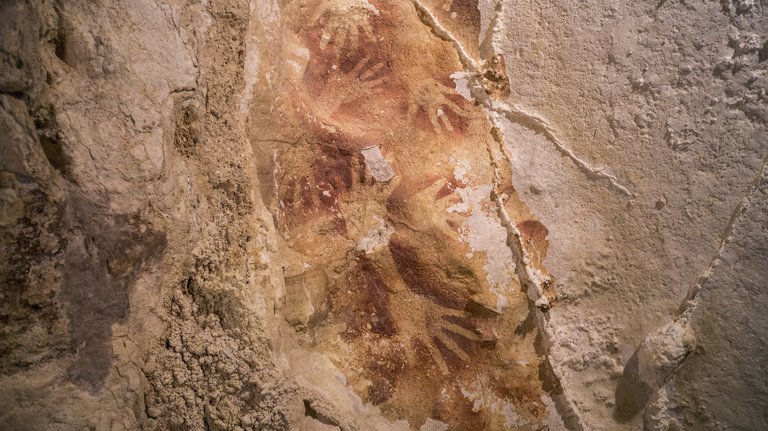The theory of the origin of rock art in doubt

Rock art discovered in caves on the Indonesian island of Sulawesi can be one of the oldest in the world, according to a group of researchers from Indonesia and Australia recently published in the journal Nature. The article shows that some hands painted on the rock in negative have a minimum age of 39,900 years, while other animal figures did 35,400 years ago.
The dating of these Indonesian paintings has questioned the current theory on the creation of rock art. In fact, until now it has been considered that the art of cliffs emerged in Europe and that the works discovered in other parts of the world, including those recently dated in Sulawesi, are much more recent.
Elderly people
According to the work published in Nature, the hands of Sulawesi and the oldest works of art of the European cliffs are of the same time. The record series of the cave of El Castillo, in Cantabria, has a minimum age of 40.400 years and is the oldest in Europe. In the Treasury of Gipuzkoa a bison painted 39,000 years ago is preserved. According to the new dates, Sulawesi's paintings were made at the same time, but thousands of kilometers from Europe, across the world.
“Perhaps the art of cliffs was created at the same time by modern men from Europe and Southeast Asia, or perhaps by the first men who left Africa,” said Thomas Sutikna, professor at Wollongong University in Australia and scientist who has participated in the recent published research.
In the seven caves of Sulawesi twelve paintings have been found, and antiquity has been determined by measuring the radioactive isotopes of the calcite, aragonito or plaster strata generated on the paintings. The uranium-thorium technique allows the measurement of the radioactive isotopes of these layers. This allows you to date underlying works of art. However, since the works are not dated directly, the technique gives the minimum age of the paintings and they may be older.
Among the works that have been dated, researchers have highlighted the importance of the figure of a wild pig species (35,400 years), although a negatively painted human hand is the oldest of the newly dated.
Buletina
Bidali zure helbide elektronikoa eta jaso asteroko buletina zure sarrera-ontzian











